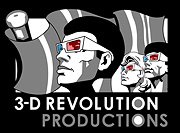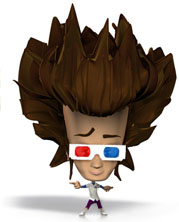Psychology of 3-D - Memories

Metalstorm 3-D. The most successful 3-D movie trailer of all time
The success and the future of Stereo 3-D film making depends on a psychological factor: memories. How do we, humans, perceive the world and store our memories? Storytelling is the conjuring up of situations and images in our minds. We identify with the hero of the story and imagine ourselves in his or her shoes as the story is being told. This is equal to the written or spoken word or the visually presented one. So when we see a movie or television program we compare the images presented to the images stored in our memories. And how are these images stored? Flat. Not in 3-Dimensions.
Seeing a 3-D image will put a viewer in the now, in an abstract mode of fight or flee, as this is real life, real danger, real objects right in front of him or her. It does not touch upon our memory banks, recognition or fantasies, as these are all stored and imagined flat. So the experience of stereoscopic 3-D visuals cannot escape the factor of ‘here and now’ and the viewer of 3-D images will not be taken away on a dream cloud of story and fantasy. Instead, he or she will take in the volumetric images ‘as is’. More or less like a circus act.
Think about it: what sticks with you most, thinking back to a recently enjoyed 3-D movie; the moment the hero kissed the girl or the shot where he poked his sword out of the screen, right into your face?
The Adventures of Sharkboy and Lavagirl
Clever, intelligent use of 3-D can overcome this serious limitation. 3-D film making has to grow up and evolve to escape the primal imagery and primal reaction it manages to conjure up at the moment. 2-D film making has a slight advantage with 100 years of cinematic culture versus a total of about 8 years of 3-D film production (1923/24, ’53/’54, ’83/’84, and 2007/’08). There is some serious catching up to do!




